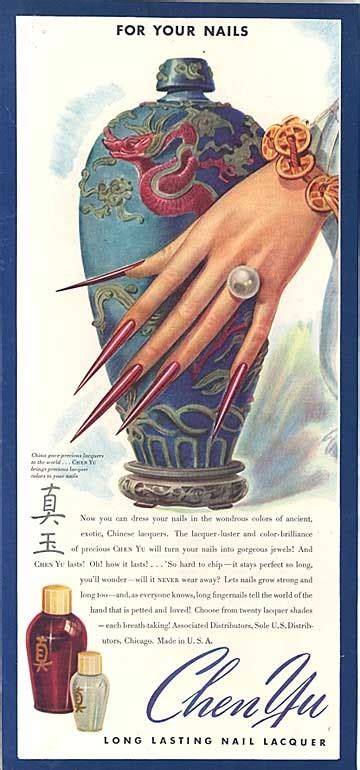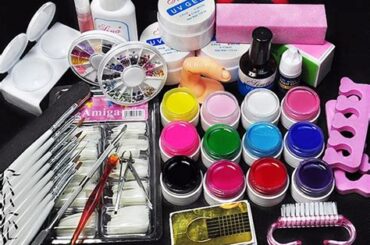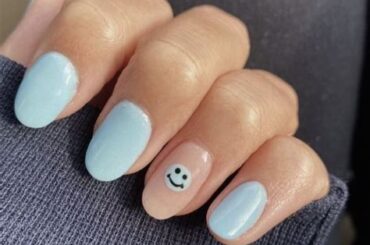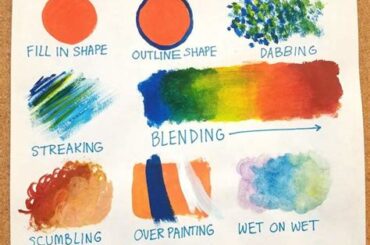Explore the evolution of nail art from ancient times to modern techniques and discover its cultural significance and future trends.
Ancient beauty practices
In ancient times, beauty practices were an integral part of various cultures around the world. From the Egyptians to the Greeks, people have always been interested in enhancing their appearance. In ancient Egypt, for example, both men and women used cosmetics made from natural ingredients such as kohl and henna to adorn their nails. These rituals were not only for aesthetic purposes, but they also held symbolic meanings and were often associated with religious beliefs.
Ancient Greeks and Romans also had their own beauty practices, including the use of olive oil to care for their nails and skin. Nail adornment was considered a sign of wealth and status, and it was common for people to use gold and silver to embellish their nails. This shows that even in ancient times, nails played an important role in defining beauty and social status.
Overall, ancient beauty practices were indicative of the cultural values and beliefs of different societies. Nails were used as a form of expression and were adorned in various ways to reflect a person’s identity and standing in society.
Early nail adornment
One of the earliest recorded instances of nail adornment dates back to ancient Egypt, where men and women of high social status would use henna to color their nails. This practice was believed to signify a person’s wealth and social standing, with different colors representing different societal roles and classes.
In ancient China, nail adornment also played a significant role in cultural traditions. The ruling class during the Ming Dynasty would often wear long, ornately decorated nails to symbolize their elevated status. For women, long nails were a sign of beauty and femininity, and intricate designs were often applied to showcase their wealth and social position.
During the early years of nail adornment, natural materials such as henna, pigment, and crushed flowers were used to decorate the nails. The intricate designs and vibrant colors were a reflection of the wearer’s social status and were often seen as a symbol of wealth and beauty. These early practices laid the foundation for the evolution of nail art throughout history.
Cultural significance of nails
In many cultures around the world, nails have held significant cultural and social significance for centuries. Whether it’s the length, shape, or adornment of nails, there are various cultural implications that have shaped nail practices and symbolism through the ages.
For example, in ancient China, long, well-maintained nails were seen as a symbol of wealth and status, as they were considered impractical for manual labor. In Egypt, both men and women painted their nails to denote their social class and highlight their beauty. Even in modern times, various cultures have traditional nail adornment practices that are deeply rooted in their cultural heritage, such as henna nail art in India and intricate nail designs in Japan.
Nails have also been used as a form of self-expression and cultural identity. From the ancient practice of carving symbols and designs into nails to modern nail art techniques, people have used nails as a canvas to showcase their individuality and affiliation with specific cultural movements or beliefs.
Nail art in the Renaissance
During the Renaissance period, nail art was primarily seen as a symbol of aristocracy and wealth. The wealthy elite would often adorn their nails with intricate designs using gold leaf, precious gemstones, and intricate patterns that were indicative of their status in society.
The use of nail art during the Renaissance era was not just for aesthetic purposes, but also had cultural significance. For example, certain nail designs were used to symbolize a person’s allegiance to a specific noble family or political faction. Nails were also seen as a way to showcase one’s artistic talents and creativity, with artists and nobles alike using their nails as a canvas for intricate masterpieces.
Overall, nail art during the Renaissance was a reflection of the opulence and status of the elite class, and it played an important role in the cultural and artistic landscape of the time.
Victorian era nail trends
The Victorian era was an influential time for fashion and beauty, and this was no different when it came to nail trends. During the 19th century, women in the Victorian era were expected to have well-groomed and polished nails, as they were seen as a reflection of one’s social status and hygiene. The most popular nail trend during this time was a natural, oval-shaped nail with a glossy finish, achieved using a mixture of beeswax and almond oil. This look was considered elegant and refined, in line with the modest and conservative values of the era.
Another popular nail trend in the Victorian era was the use of intricate nail jewelry and embellishments. Women would adorn their nails with small gems, pearls, and even small paintings to add a touch of opulence to their look. These embellishments were often applied by skilled craftsmen, creating miniature works of art on the nails. The use of nail jewelry was a statement of wealth and sophistication, and it was a way for women to display their status and taste in fashion.
Moreover, the Victorian era saw the rise of nail care rituals and treatments, as women began to pay more attention to the health and appearance of their nails. Cuticle creams, nail strengtheners, and buffing tools became popular, as women sought to achieve the perfect manicured look. These practices laid the foundation for modern nail care and maintenance, as they emphasized the importance of healthy nails as a symbol of beauty and femininity.
Innovation in the 20th century
Nail art has a rich history that dates back to ancient times, but it was in the 20th century that we saw a significant innovation in the world of nail art. One of the most impactful innovations in nail art during the 20th century was the invention of acrylic nails. This new technique allowed for longer, more durable nails, and opened up endless possibilities for creative nail designs. The invention of the first nail polish, which was a clear, glossy paint, also marked a major milestone in the history of nail art innovation.
Another groundbreaking innovation in the 20th century was the introduction of the airbrush technique for nail art. This technique revolutionized the way nail designs were created, allowing for intricate and detailed designs that were not possible with traditional nail polish brushes. Nail artists were able to create stunning, unique designs using this new method, and it quickly gained popularity in the beauty industry.
Moreover, the 20th century saw the rise of nail art competitions and shows, which provided a platform for nail artists to showcase their skills and creativity. These events inspired and pushed nail artists to experiment with different techniques and materials, leading to the development of new and innovative nail art trends.
Pop culture influence on nail art
Nail art has been influenced by the ever-changing trends of pop culture throughout the years. From iconic celebrity looks to popular music and fashion styles, pop culture has left its mark on the nail art scene in various ways.
TV shows and movies have played a significant role in shaping nail art trends. From the iconic nail designs seen in classic films like ‘Clueless’ to the quirky nail styles showcased in TV shows like ‘Euphoria’, pop culture has provided inspiration for nail artists and enthusiasts alike.
The rise of social media platforms like Instagram and TikTok has also had a profound impact on nail art, as influencers and celebrities often showcase their trendy nail designs to millions of followers, sparking new trends and influencing the wider nail art community.
Modern nail art techniques
The History of Nail Art: From Ancient Times to Modern Trends
Modern nail art techniques have come a long way from the simple application of nail polish. Today, there are a variety of advanced techniques that nail artists use to create intricate and stunning designs. One of the most popular modern techniques is the use of nail stamping. This involves using a metal plate with designs etched into it, and transferring the design onto the nail using a stamper and nail polish. Nail stamping allows for precise and detailed designs that are difficult to achieve freehand.
Another modern technique that has gained popularity is the use of nail wraps. Nail wraps are pre-designed stickers that can be applied to the nail for a quick and easy way to achieve intricate designs. These are perfect for those who want a professional looking manicure without having to spend hours at the salon. Additionally, nail artists also use techniques like 3D nail art, where tiny embellishments are added to the nails to create a three-dimensional effect, and chrome powder nails, where a metallic powder is rubbed onto the nails for a shiny, mirror-like finish.
These modern nail art techniques have revolutionized the way we think about nail design, allowing for endless possibilities and creativity. With the use of advanced tools and materials, nail artists are able to create masterpieces that were once thought impossible. As technology continues to advance, we can only imagine what the future holds for nail art techniques.
The future of nail art
In recent years, nail art has become a major trend in the beauty industry, with new techniques and designs constantly emerging. With the advancement of technology, the future of nail art looks promising, with the potential for even more creativity and innovation.
One of the most exciting developments in the future of nail art is the incorporation of digital elements. Nail artists are now using 3D printers to create intricate designs, and some are even experimenting with LED and holographic nail art. These advancements allow for endless possibilities in terms of texture, color, and pattern, transforming nails into miniature works of art.
Additionally, sustainability and eco-friendliness are becoming increasingly important in the beauty industry. The future of nail art will likely see a rise in biodegradable and non-toxic materials, as well as a focus on ethical and cruelty-free practices. Nail art enthusiasts can expect the use of natural and organic ingredients, as well as eco-conscious packaging and products.
Frequently Asked Questions
What is the origin of nail art?
Nail art dates back to ancient times, with records showing that people in India and Egypt used henna to decorate their nails as far back as 5000 years ago.
When did nail polish become popular?
Nail polish became popular in the 1920s, thanks to the invention of modern nail lacquer. This led to the rise of manicures as a fashionable trend.
What are some traditional nail art techniques from different cultures?
Some traditional nail art techniques include Japanese
How has nail art evolved in modern times?
In modern times, nail art has become an industry of its own, with countless designs, techniques, and products available. From acrylics to gel polish, the possibilities are endless.
What are some popular nail art trends today?
Some popular nail art trends today include minimalist designs, negative space nail art, and 3D nail embellishments, reflecting the diversity and creativity of modern nail art.
Are there any health considerations to keep in mind when getting nail art?
Yes, it’s important to be mindful of the chemicals used in nail products and to practice good nail hygiene to prevent infections. It’s also advisable to seek professional nail care to avoid damage to the nails and cuticles.
What does the future of nail art look like?
The future of nail art is likely to see more innovative techniques and sustainable products, as well as a focus on self-expression and individuality. Nail art is expected to continue evolving with the times.





